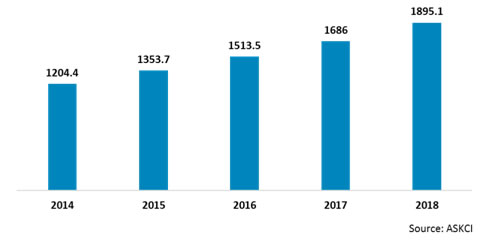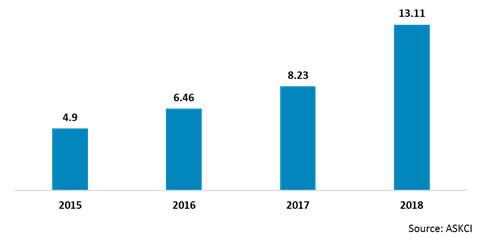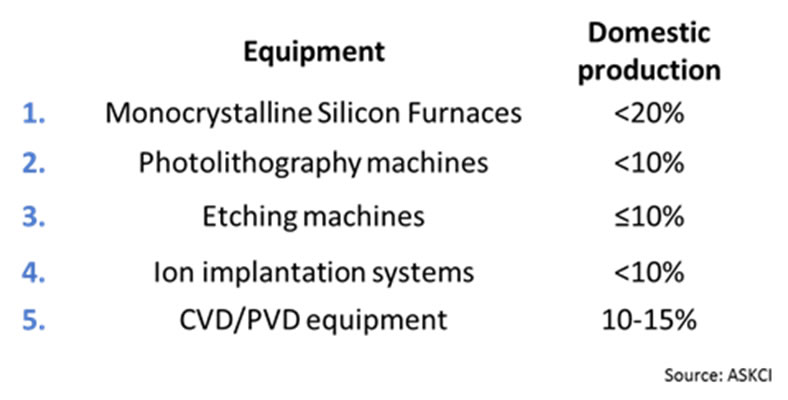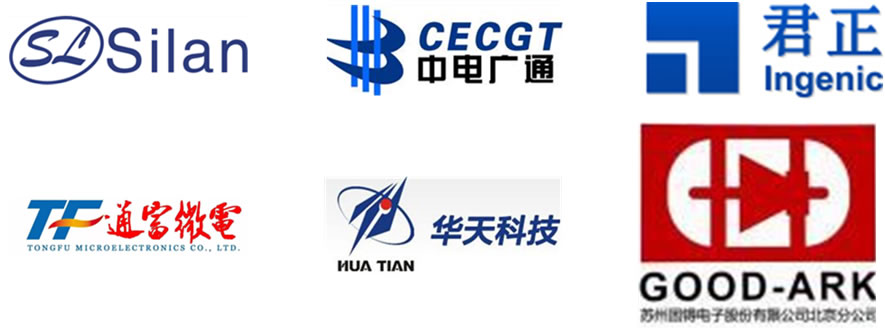The Chinese Semiconductor Industry: A General Overview
July24, 2019
ByDaniel Choi
Overview
Asis the case in many other countries, semiconductors are one of the hottestproducts in China at the moment. Widespread usage in downstream industries hasbeen extremely beneficial to the semiconductor industry’s growth in China. Theindustry’s concentration around key areas such as the Yangtze and Pearl RiverDelta as well as near the Bohai Rim has allowed for massive IT communities toform in these areas. The market itself however is flooded with low qualityproducts. Lower technological standards have led to an increased need forforeign trade to satisfy demands for high-end products.
Industry data

Total sales revenuefor semiconductor manufacturing equipment in China amounted to 13.11 billionUSD in 2018. Growth rates between 2017-2018 compared to previous years weremuch higher than previous years at 59.2% compared to 27.3% between 2016-2017and 31.8% between 2015-2016.


The industry has achieved significant growth in recent yearsdue to the success of downstream industries such as the PC, home appliance,vehicles and LED industries. Overwhelming demand, lagging production capacityand technological deficiencies however mean that Chinese manufacturers areforced to rely on foreign vendors and thus possess weaker bargaining power withsuppliers.
A weakness in the industry and potentialdevelopments for the market

Themajority of semiconductor equipment in China are imported from foreigncountries. Domestic production of equipment is on average lower than 20%. TheChinese markets for the above equipment are dominated byforeign manufacturers as Chinese manufacturers do not possess the technicalproficiency and means to challenge them as of yet.
Insome ways this reflects the traditional Chinese mindset of prioritizing otheractivities before innovation, the direct result of which has caused anover-reliance on foreign made equipment and technologies, thus makingproduction costs higher than if the industry was using domestic equipment.Recent policies from the Chinese government prioritizing innovation weredesigned with these thoughts in mind, and thus point to a potential directionthat the industry may take, in that foreign equipment may be replaced bydomestic alternatives in the near future. For now, however, reliance on foreignequipment and technologies is unlikely to see any changes in the short term. Foreignvendors of semiconductor production will continue to see high demand fromChinese clients.
Notable Chinese companies
